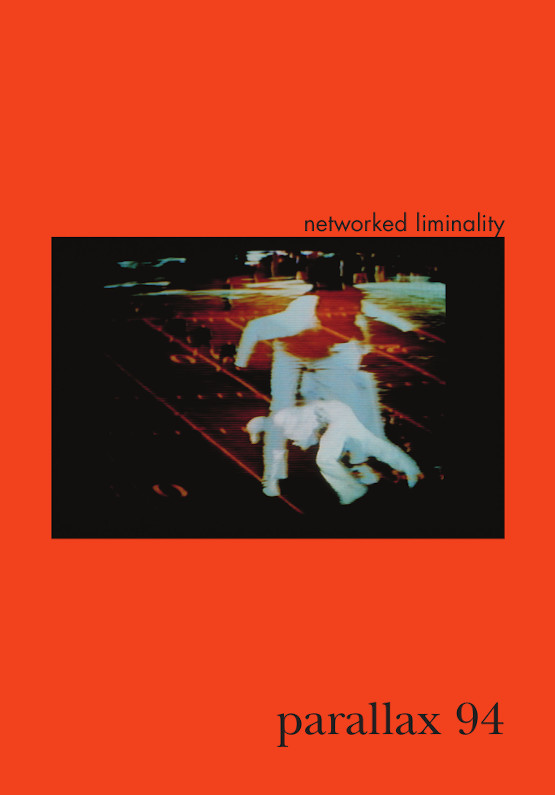Networked Liminality
parallax, volume 26, number 1 (2020), edited by
Yiğit Soncul and Grant Bollmer
︎return home

“Networked Liminality” is a special issue of the journal parallax I co-edited with Yiğit Soncul, a Lecturer at the University of Winchester in the United Kingdom. As we state in the introduction to the issue, the idea of “networked liminality” is explicitly there to oppose “networked connectivity:”
In thinking through these “liminalities,” this issue contains contribitions from renowned and emerging researchers and theorists who live at the border of digital culture and contemporary art: Sean Cubitt, Ingrid Hoelzl, Tony Sampson, Tero Karppi, Jim Hodge, Katherine Guinness, Alex Anikina, Philip Glahn and Cary Levine, and Mihaela Brebenel.
The introduction of the special issue can be found here, and the entire issue can be found here.
In spite of any assumed ‘smooth’ or ‘frictionless’ connections attributed to their form, networks are inherently uneven... This issue of parallax [is inspired by calls to] look for, examine, and theorise how networks produce subjects who only partially connect, liminal subjects that do not abide by normative demands of connectivity. This issue focuses on the liminal spaces and figures that enact the multiple subjectivities associated with networks. These figures help us imagine political conflicts that undermine the seeming flatness of networked relation, looking to liminality - rather than a more simplistic fetishizing of connectivity - as a potential space over which networked power is maintained, contested, undermined, and enacted.
In thinking through these “liminalities,” this issue contains contribitions from renowned and emerging researchers and theorists who live at the border of digital culture and contemporary art: Sean Cubitt, Ingrid Hoelzl, Tony Sampson, Tero Karppi, Jim Hodge, Katherine Guinness, Alex Anikina, Philip Glahn and Cary Levine, and Mihaela Brebenel.
The introduction of the special issue can be found here, and the entire issue can be found here.
